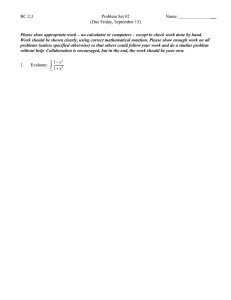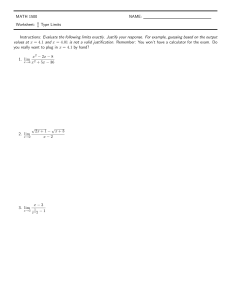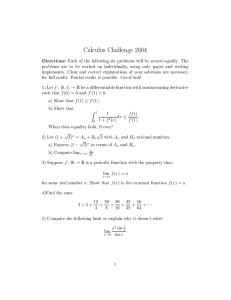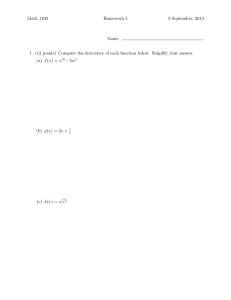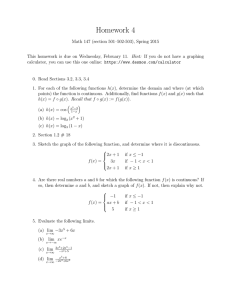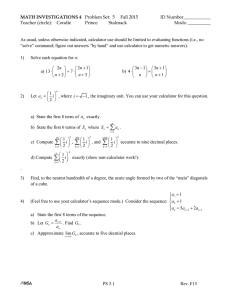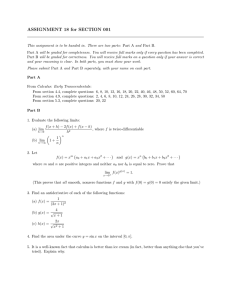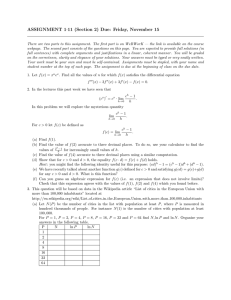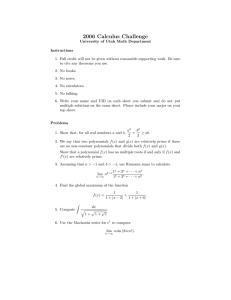Short Calculus (MATH 1142) The Number e
advertisement
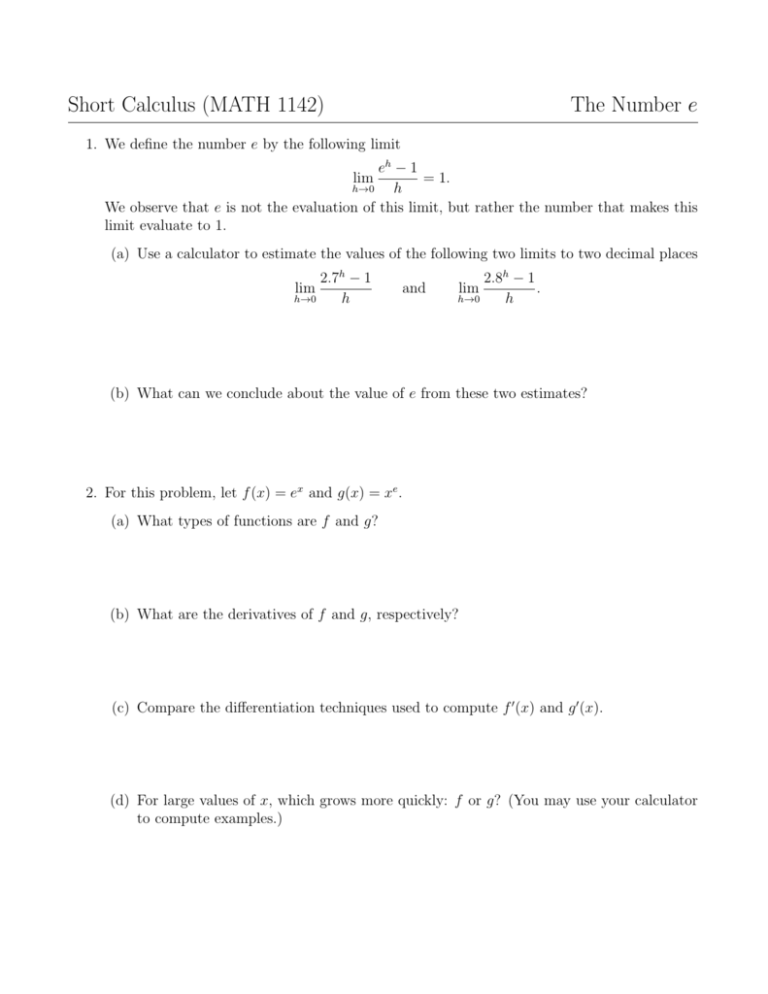
Short Calculus (MATH 1142) The Number e 1. We define the number e by the following limit eh − 1 = 1. h→0 h We observe that e is not the evaluation of this limit, but rather the number that makes this limit evaluate to 1. lim (a) Use a calculator to estimate the values of the following two limits to two decimal places 2.7h − 1 h→0 h lim and 2.8h − 1 . h→0 h lim (b) What can we conclude about the value of e from these two estimates? 2. For this problem, let f (x) = ex and g(x) = xe . (a) What types of functions are f and g? (b) What are the derivatives of f and g, respectively? (c) Compare the differentiation techniques used to compute f 0 (x) and g 0 (x). (d) For large values of x, which grows more quickly: f or g? (You may use your calculator to compute examples.)
